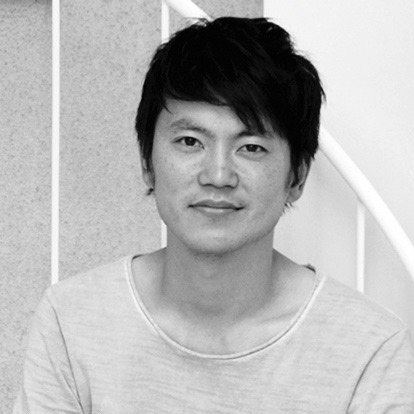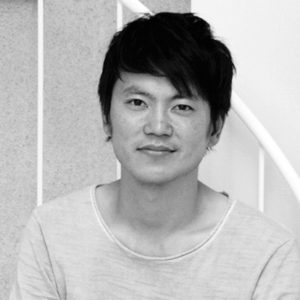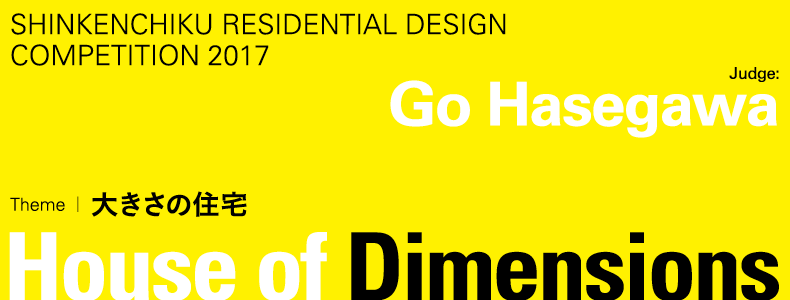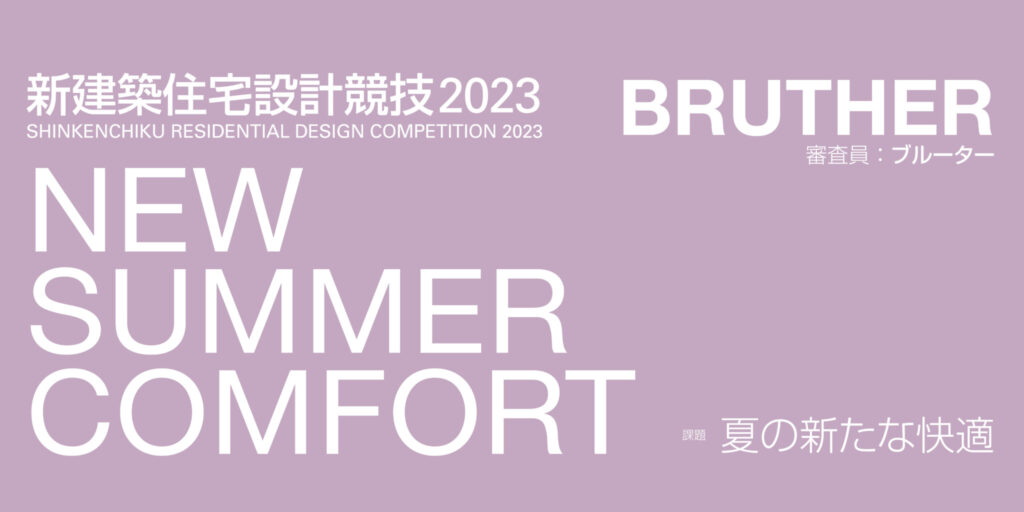Shinkenchiku Residential Design Competition 2017 House of Dimensions
Theme House of Dimensions
The theme of this competition is House of Dimensions. Imagine, for a moment, a new type of house through the perspective of its dimensions.*
The size of a house represents many things: the assets of the owner, for example, or a set of values that this person harbors in relation to the house. Some people think that the bigger a house is, the better, while others prize a certain aesthetic that can be found within a smaller dwelling. The standard dimensions of a house also differ according to the country and region. When a Japanese person goes overseas, he or she is astonished to find that houses there are twice as big. Or, sometimes the most surprising thing about visiting older, historical houses is their size. It is not difficult to find a house – whether old, new, in Japan or abroad – that is bigger even than the public buildings we know today. People tend to lump all of these issues together and talk about the size of houses in terms of “residential scale.” In fact, however, the dimensions of a house are relative: they are deeply rooted in the society, culture, and history of each place.
What I’ve written above is related to the size of a house. But the theme for this competition is not “size of a house,” but “a house of dimensions.” In other words, what is required is not simply to propose a size of house that one has never seen before: to attempt to make a house merely gigantic, or minuscule. This would be completely dull, and without any interest whatsoever. As previously mentioned, the dimensions of a house are in fact a relative matter – the settings and parameters, once they have been decided, would produce any number of extreme cases. In a sense, what is required here is to design a house using only their dimensions.
I would like participants to rethink about new possibilities surrounding the dimensions of physical space, such as width, depth, and height – or perhaps sets of various dimensions that have been completely neglected in the field of residential design up until now. Be free, and bold, in your imaginings!
I look forward to seeing your proposals for new houses that challenge the very notion of dimensions.
*Japanese title of this competition is 大きさの住宅 (ookisa-no jutaku). The connotation of the word 大きさ (ookisa) is ambiguous, referring to largeness (or smallness) of an area, width, volume, weight, scope, power, number, age… The closest translation in English would be “dimension”.
Prize
- WinnerMultiple1,000,000¥
The number of winners and the amount of prize will be determined by the judges.
Schedule
- 2017.01.31 (火)Registration opens
- 2017.05.09 (火)Registration closed
- 2017.10.01 (日)Announcement of the Winner
Guidelines
Entry and Application
To enter the competition, please first register on the competition website. A registration number will be issued by email after the registration form is properly completed. Each applicant should keep a record of this registration number, as it will be needed for submitting your proposal. If there is any change in the registered personal information, re-registration is required. Also, if the applicant wishes to submit multiple proposals, it is necessary to obtain a registration number for each proposal.
• No inquiries regarding the registration number will be accepted once the number has been issued.
• Registration is only available through the competition website.
• Use of mobile phone email address is not recommended since there might be problems in receiving the registration number.Submission Requirements
Contents: Site plan, floor plan, elevation, section, perspective drawing and axonometric drawing at any scale. You are free to include photograph of a model, detailed drawing, other chart. Your submission should include a descriptive text of your design in less than 250 words in English, which must be in 12 point type or larger. Paste this same text in your submission email. All drawings, illustrations, and texts should be laid out on two sheets of A2 (420×594 mm / 16.5×23.5 inches).
• File format: PDF
• File size should not exceed 10 MB (please combine two sheets in one file)
• The registration number must be used as the name of the PDF file of each design entry (e.g., skc0000.pdf).Submission Procedure
Use your pre-registered email address and adhere to the format described below.
1) Email subject line should read: “0000 (your registration number) / Shinkenchiku Residential Design Competition 2019”.
2) Attach your submission file. Be mindful of the file size. Files that do not meet the specified requirements will not be considered.
3) Your email should include the following information: the registration number / full name, age, and profession of all the team members / team leader’s home address, telephone number, fax number (if available), and email address / a descriptive text of the design in less than 250 words.
Note: The amount of emails right before the deadline may overwhelm our internet server, so please do not wait until the last minute to submit your entry. The competition hosts will take no responsibility for submissions that arrive late due to technical issues and will not judge such submissions.Announcement of the Winner
Winner(s) will be announced in the October 2017 issues of SHINKENCHIKU (published on Oct 1, 2017) and a+u (published on Sep 27, 2017), their digital issues and on the competition website.
Notice
• Copyright of the proposal belongs to the applicant, while the publishing right belongs to Shinkenchiku-sha Co., Ltd..
• Submitted proposals, regardless of the result, may be published on the competition website.
• Questions regarding the competition regulations will not be answered by the hosts. All matters not covered in the regulations listed above are left to the discretion of the entrants.
• Proposals must not have been made public previously in any form. The work must not (in total or in part) infringe on anybody’s copyrights. Do not use images copied from magazines, books, or websites. If a copyright infringement is discovered, the prize may be taken back at the host’s discretion.
• The winning entrants will be requested to submit high-resolution digital data for publication.
• All fees associated with submissions must be borne by entrants.
• Please double-check the contents of your submission. You will not be allowed to replace your proposal after submission.
• Please avoid corrupted texts and broken links. Please embed all the linked files.
• Entries will only be accepted if they adhere to all the regulations.
Judges
Shohei ShigematsuJury Member
1977 born in Saitama, Japan
2002 Master of Engineering, Tokyo Institute of Technology Graduate School
2002–2004 Taira Nishizawa Architects
2005 Established Go Hasegawa and Associates
2012–2014 Visiting Professor, Academy of Architecture of Mendrisio, Switzerland
2014 Visiting Professor, Oslo School of Architecture and Design, Norway
2015 PhD in Engineering, Tokyo Institute of Technology Postgraduate School
2016 Visiting Professor at University of California, Los Angeles, USA
2017 Visiting Professor at Harvard University Graduate School of Design, USA
Comments
コンペティション 2017 総評:アイデアと大きさ/長谷川 豪


長谷川 豪 審査委員
普段何気なく使っている「大きさ」という概念を更新する住宅.これが今回のコンペの課題である.
「大きい/小さい」は,幼児が最初に覚えて,使い始める形容詞のひとつだろう.それだけ「大きさ」は人間にとって馴染みのある概念なのだが,しかし同時に,なんとも曖昧な概念でもある.何を基準にしてそれを「大きい」というのか,その都度違うからだろう.ある人にとって「大きい」ものが,他の人にとって「小さい」なんてことは珍しくないし,ヒューマンスケールなど「絶対的な大きさ」とされているものでさえ,ちょっと厳密に,たとえば欧米人と日本人の肉体の違いを見てしまえば,その絶対性は揺らぎ始める.課題文でも書いたとおり,どこ(地域や文化の違い),いつ(時代の違い),誰(価値観の違い),に「大きさ」は深く依存している.つまり,「大きさ」には文化的差異やその時代の社会状況が投影されているのだ.逆に言えば,新たな「大きさ」を通じて,現代の文化や社会のあり方に一石を投じる住宅を提案することもできるのではないか.そのあたりに期待していた.
馴染みのある「大きさ」をテーマにしたので取り組みやすいだろうと思いつつも,どれだけの応募があるか少し不安だったが,世界中からたくさんの作品が集まった.登録数で1,081(国内614,海外467),応募作品数としては418.これほど歴史ある国際的なアイデアコンペは世界的にもあまり例がないのではないか.慣れないPDFでの審査だったということもあり,だいぶ審査に時間がかかってしまったが,力作が多く,賞を決める段階でだいぶ迷った.
1等のDamjanović案は,先に書いた「大きさ」の文化的差異に着目し取り扱うものだ.国境に建つこの住宅には,エレメントがランダムに配置される.エレメントの大きさやかたちはさまざまな文化の違いを反映する.テキストによれば,たとえば円柱は,大きさを変えることでベンチ,教会,井戸,シャワー室になる.移民危機という現代の社会問題を契機としながら,それを解決するのではなく,「さまざまな大きさ」が文化的差異を淡々と受け入れていく住宅.「大きさ」の種類を豊富化することは,人間の差異を差異のまま受け止める方法論になる.その考え方にとても惹かれた.イメージと移民の履歴を表す2枚のドローイングを効果的に使い分けたプレゼンテーションも秀逸だった.ひとつだけ気になったのはタイトルのcollage house(コーリン・ロウのcollage cityのオマージュだろうか?).ポストモダニズムを連想させる「collage」を超えて,この案が志向しているグローバルな時代の世界のあり様をタイトルにしてくれたらなおよかったが,いずれにせよ1等にふさわしい案だった.
2等の椎橋案はジェンダーの大きさを問題にする挑戦的な住宅で,「社会的性差の大きさ」が消失していく現代の社会状況が投影された.(実際ここまで性差がなくなるのか?という話は置いておくとして)中央の壁を境に男女の空間が鏡像反転する中,唯一の性差を表す場になるとするベッドのみが左右非対称に置かれるというアイロニーに思わず笑った.多くの応募者が,高さや広さなど,物理的な大きさを懸命に操作していたのに対し,「大きさ」という課題に対して思いがけない方向にボールを投げた心意気と,それを空間化したことを評価したい.残念だったのは白っぽく飛ばした模型のイメージに強い既視感があったこと.このアイデアにふさわしい,したたかな表現があり得たはずだ.
物理的な大きさを扱う案の中で際立っていたのは,3等のChang+Manthripragada案で,テーブル,キッチン,バスタブ,ベッドを同一サイズに揃えるというとてもシンプルなアイデア.エレメントの大きさを揃えることで,同じはずの空間の大きさがずれて見えてくる.極端な大きさを住宅に持ち込むエキセントリックな案が多い中で,「大きさ」の相対性をうまく捉えた案だった.たった1センテンス(!)のテキスト,簡潔で綺麗なプレゼンテーションにも好感を持った.同じく3等のRoh+Kim+Park案は,人間のみならず大小さまざまな動物が共存するシェアハウス.こうした大きな生態系を住宅として捉えるアプローチはほかにもいくつかあったが,提案の密度はこれが頭ひとつ抜けていた.それぞれの動物の巣穴をコラージュするのではなく,新たなひとつの住宅として描き直せていたらなおよかった気もするが,21種類の「大きさ」が渾然一体になったイメージには迫力があった.
佳作の伊藤案は,どの部屋にいても音の響きが等しくなる住宅を提案するもので,バリエーションとして示された塔型・平屋型は少し図式的すぎたが,「大きさ」の捉え方として興味深く,実際に歩きまわって音を体感してみたいと思わされた.さらに展開可能なアイデアだろう.Montresor+Lando案(佳作)はカルフォルニアの大自然の中に最小限のエレメントを設えて住宅とするもので,「建築の大きさ」を媒介せずに,身体と自然のスケールを即物的に結び付ける考え方に共感した.断片的なアイデアを統合するような大きなイメージを示してくれたらなおよかった.湾曲した大きなバルコニーで集合住宅の立面を構成する山口案(佳作)はプレゼンテーションがやや説明的で,もっと迫力あるドローイングを見たかったが,住宅を「群れの大きさ」から再構成したアプローチを評価したいと思った.極薄から極厚になる天井によって空までの距離を問題にする畠山案(佳作)は,「大きさ」というよりも頭上の量塊の「重さ」に案の面白さがすり替わっているような気もしたが,視覚だけで捉えきれない空間の質を扱おうとする爽やかな案だった.川本案(佳作)はさまざまな「大きさ」が混在するという明快なアイデアで,緻密なドローイングがとても印象的だった.ただ,樹木をメタファーにしていることからも「ノースケール」というよりも「スケールレス」(目盛りがない)と呼ぶべきではないか.また美しいドローイングが印象的なZhang案(佳作)は住宅の「大きさ」を1次元の奥行のみに限定し,線に沿って生活するものだ.1次元の住宅というコンセプトはとても興味深いが,そうすることで何が起こるのか,もう少し掘り下げてほしかった.
さて最後に,審査の時の話を.50案くらいまで絞り込んだ段階で,iPadでPDFを見比べることを諦めて,すべてプリントアウトすることにした.事務所でプリントアウトするには結構な量だが,画面上でいくらでも拡大縮小できてしまうPDFの審査は,時間をかけて見れば情報として頭に残っても,それらを客観視することがどうも自分には難しかったのだ.これにはきっと個人差があるだろうし,単に慣れの問題もあるかもしれない.今回のコンペは,PDF形式のデータでの提出ではあったものの,応募要項にはA2サイズという「大きさ」が指定されていた.だから応募者も少なくとも一度はプリントアウトしてその「大きさ」を確認したはずだ,と思った.紙にプリントアウトして机に並べた時に,強い手応えを感じた.あまり惹かれていなかったいくつかの案が,プリントアウトした途端に上位候補になったのだ.あるいはその逆もあった.自分でも驚くほどに審査結果が変わった.
アイデアというのは,それ自体は情報でしかないのかもしれない.でも具体的な「大きさ」を持った瞬間に,現実と向き合い始める.どんな素晴らしいアイデアも「大きさ」を間違えると台無しになる.アイデアに「大きさ」が与えられる瞬間に,建築が生まれるとさえ言えるのかもしれない.

